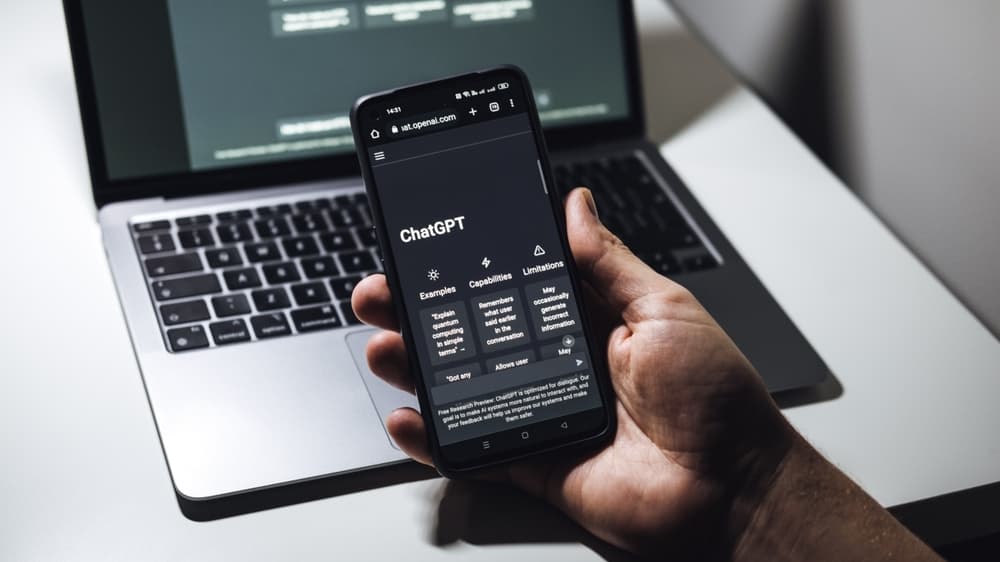Leaders and managers today find themselves at the forefront of a profound technological revolution that is reshaping industries and organisations. The era of artificial intelligence, Chat GPT, and cyber breaches has arrived, bringing both immense possibilities and daunting challenges. Navigating this ever-changing landscape requires an understanding of how we can embrace technological advancements, safeguard our organisations, think strategically to maximise the potential of these innovations.
Change is a double-edged sword. Technological advancements hold the promise of propelling us forward, revolutionising our processes, and unlocking opportunities. However, they also introduce risks and uncertainties that cannot be overlooked or underestimated. As leaders, we must approach these changes with a balanced mindset – embracing the possibilities while remaining vigilant to potential pitfalls.
This means that cyber security becomes everyone’s job, not something left to the IT department as the prevalence of cyber breaches has grown alarmingly, with potentially devastating consequences for businesses. In Australia alone there are thousands of data breaches every year varying in size and impact, with many large organisations facing extortion at one end and class actions at the other.
Staying ahead in a rapidly evolving technological landscape is essential to drive productivity, safeguard our organisations, and prepare for the future. Artificial intelligence (AI) applications are among the ground-breaking advancements that offer immense potential in these areas. But what do leaders need to know about these technologies, and how can they harness their power to their advantage?
Automation, chat bots, machine learning are already present in organisations and have been for a number of years. The most common applications include:
- Virtual Personal Assistants – like Siri, Google Assistant, and Amazon Alexa.
- Customer Service Chatbots – answering frequently asked questions, troubleshoot issues, and escalate complex problems to human representatives if needed.
- Recommendation Systems – analysing user behaviour and preferences to provide personalised recommendations for products or content.
- Fraud Detection – detecting patterns and anomalies in large datasets to identify fraudulent activities.
- Predictive Analytics – sales forecasting, demand planning, inventory management, and risk assessment.
- Image and Speech Recognition – facial recognition for identity verification, object detection in security systems, and autonomous vehicles.
- Smart Manufacturing – monitoring and controlling production lines, predicting maintenance requirements, and improving quality control.
- Content Generation – generating reports, writing articles, or producing personalised marketing content based on user preferences and data.
- Supply Chain Optimisation – analysing demand forecasting, inventory management, and logistics optimisation, leading to improved efficiency and cost savings.
- Healthcare Diagnostics – Medical image analysis, disease diagnosis, and personalised treatment recommendation.
So, the real question is not “if” AI will become part of the way we work, but when.
As a writer focused on productivity, I’ve had numerous conversations with professionals facing challenges that hinder their best work. From endless meetings and administrative tasks to information overload, these are the roadblocks that prevent us from fully engaging in our core responsibilities. They consume our time, leaving little room for meaningful contributions or achieving a healthy work-life balance.
Enter ChatGPT—a powerful tool that addresses these pain points. Think of it as having a virtual assistant, intern, or support person that helps you breeze through mundane tasks up to 50% faster than before. A study by MIT showed that combining ChatGPT with human input led to productivity gains of 35 to 50%, with a simultaneous improvement in quality by up to 25%. These figures are significant and cannot be ignored.
ChatGPT is a tool that can generate difficult emails, process flow charts, instruction guides, presentation outlines, job descriptions, administrative tasks, and much more. It acts as a virtual librarian, capable of providing information on any topic you ask. With its generative pre-trained transformer (GPT) architecture, it understands and responds to human language in a natural and intuitive manner.
So, there’s a lot going on right now.
As leaders, we need to pause, reflect, and re-evaluate our priorities. Are we dedicating enough time and resources to stay informed about technological advancements? Are we equipping our teams with the necessary training and support to navigate this ever-evolving landscape? Do we have the adaptive capacity to proactively prepare our organisations for the unexpected?
Technological change is relentless, and there’s no question that this era of technological change presents leaders and managers with a unique set of challenges and opportunities. The future belongs to those who are willing to adapt, think ahead, and use their time and resources intentionally.
Are you ready to embrace the era of technological change and guide your organisation to new heights?


